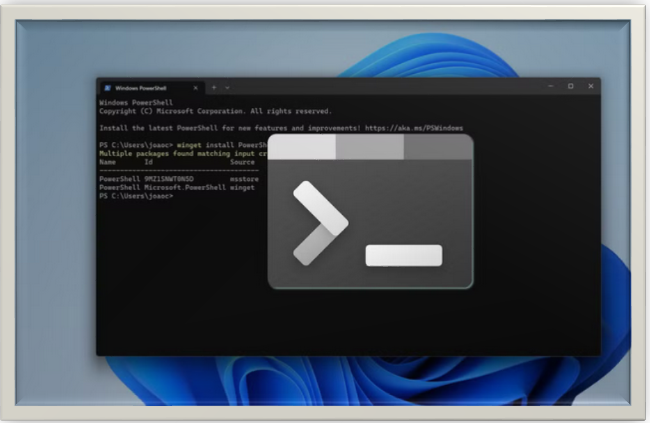HOW TO PROTECT DATA FROM DELETION ON YOUR PC: A BEGINNER’S GUIDE
Learn essential tips to protect your data from accidental deletion on your PC. Discover backup methods, recovery options, and secure file protection tools.

INTRODUCTION:
It's crucial to protect your data from unintentional loss or deletion. Losing crucial data can be daunting and infuriating, whether the files are priceless family portraits, important job documents, or your collection of favorite music. This manual will walk you through simple methods to secure your PC's data. These instructions are simple to follow, so even if you are not super techy, you’ll get it.
1. Regular Backups
Creating copies of your files and keeping them in a different location is known as data backup. You can quickly recover the original data from your backup if something happens to them.
How to Make a Data Backup:
External Hard Drive:
This is a physical device that uses a USB connection to connect to your PC. It's a great choice if you frequently need to save important files.
i. Get a hard drive externally.
ii. Connect it to your computer using the USB slot.
iii. Launch "Finder" on a Mac or "File Explorer" on a Windows computer.
iv. To back up your data, just drag and drop them onto the external drive icon.
Cloud Storage:
This is like having a magical online locker where you can keep your files safe.
Online storage options are available through services like Dropbox and Google Drive. Your data can be uploaded to the cloud and accessed from any internet-connected device. Numerous cloud providers provide limited storage in their free plans, with the opportunity to pay for more capacity.
i. Decide on a cloud storage service provider, such as Dropbox, One Drive, or Google Drive.
ii. Sign up and install the application on your PC.
iii. Drag and drop your files into the appropriate application folder to upload them to the cloud.
2. In Windows, enable File History or System Restore.
With the help of these built-in Windows utilities, you may automatically back up your files and system configurations and restore prior versions or a previous state for your system.
How to Turn on File History:
i. Select "Backup" from the "Settings" > "Update & Security" menu.
ii. Click "Add a drive" and select a network location or an external device.
iii. Make sure "Automatically back up my files" is enabled.
How to Enable a System Restore
i. Navigate to "Control Panel" > "System and Security" > "System."
ii. Select "System Protection" by clicking on it from the left.
iii. Select the drive you want to protect, then select "Configure".
iv. Modify the maximum storage capacity and activate "Turn on system protection".
v. To save your modifications, click "OK".
3. Using File Permissions
You can control who has access to and changes to your files with your computer. This function is especially helpful in avoiding unintentional deletions by other users. For Windows computers, the following instructions explain how to set file permissions:
i. To secure a file or folder, right-click on it and choose Properties.
ii. Select the Security tab.
iii. To change the permissions, click the Edit option.
iv. After selecting Add, type in the username of the account you wish to restrict.
v. Ensure that the "Delete" option is not checked in the Permissions section.
By doing this, the user's ability to remove the file will be terminated.
4.Hiding in Plain Sight:
Hiding files can be a helpful temporary fix, even though it might not be the most reliable approach. To hide files, follow these steps:
i. To hide a file or folder, right-click on it.
ii. Select the Properties.
iii. Check the box next to Hidden on the General tab.
iv. Select Apply, followed by OK.
Hidden files aren't invisible. If consumers are knowledgeable and know where to look, they can still find them.
5. Make Use of a Trusted Antivirus Program
Your data could be corrupted or erased by malware. An effective antivirus program will protect your PC from these threats.
Installation and Operation of Antivirus Software:
i. Choose a reliable antivirus program (such as Bitdefender, McAfee, or Norton).
ii. Get the software from its official website and install it.
iii. Run a thorough check on your computer to find and remove any malware.
iv. Set up automatic updates and scans to guarantee your computer is always protected.
6. Prevent Accidental deletion
It's far too simple to unintentionally erase files. Being cautious can assist you in preventing needless data loss.
i. Please Confirm Before Delete:
Before pressing the empty button, always take time to review the files in the Recycle Bin (Windows) or Trash (Mac).
ii. Use keyboard shortcuts carefully
Exercise caution when using keyboard shortcuts such as "Shift + Delete," as they obviate the Recycle Bin and wipe files irrevocably.
iii. Create Read-Only Files:
To prevent inadvertent additions or deletions, think about designating important documents as read-only.
7. Examine Software for Data Recovery
Data recovery software can help find missing items in the case of an inadvertent file deletion.
i. Choose a data recovery program (Recuva, EaseUS Data Recovery, etc.).
ii. Install the software on your computer after downloading it.
iii. Select the files you want to restore, then store them somewhere safe.
8. Check the Recycle Bin Recovery
If you unintentionally erased a file, don't give up! It might be in the Recycle Bin still. Here's how to ascertain it:
i. On your desktop, double-click the Recycle Bin icon.
ii. Look for the file that was erased.
iii. Select Restore with a right-click on the file. Remember that recovering files that have been completely erased or removed from the Recycle Bin is far more difficult, if not impossible.
Tips for good digital hygiene
You can prevent data loss and make sure your computer runs well by forming good habits.
i. Make sure your software is up to date.
Update your operating system and apps regularly to protect yourself from security risks.
ii. Organize Your Files Streamlined
- To make it simple to find your important papers, create a logical folder structure and give your files descriptive names.
iii. Limit User Permissions
- Exercise caution while giving other users on your computer administrative access.
These easy-to-follow guidelines will significantly reduce the likelihood of data loss on your computer. Never forget that it's preferable to avoid problems than to address them afterward! Make sure you have a system that works for you and that you regularly backup your important files. Consider encrypting sensitive data for further security
CONCLUSION:
It's easier than you might think to keep your data on your computer from being accidentally erased. You can safeguard your critical data by regularly backing up your files, making use of built-in security features, running reliable antivirus software, being cautious when deleting files, using data recovery tools, and practicing good digital hygiene. These easy-to-follow guidelines will significantly reduce the likelihood of data loss on your computer. Never forget that it's preferable to avoid problems than to address them afterward! Make sure you have a system that works for you and that you regularly backup your important files. Consider encrypting sensitive data for further security
Thanks for reading.
If you like the article, consider sharing and subscribing. ;)




